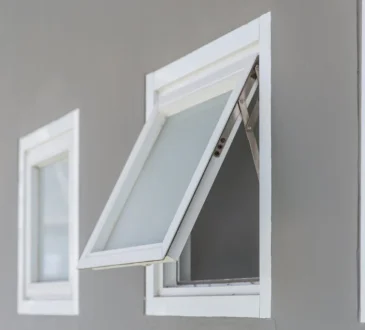
When it comes to designing modern homes, every detail counts—from wall color and lighting to furniture and flooring. One flooring option that’s quickly becoming a designer favorite is WPC flooring, or Wood Plastic Composite flooring. Known for its beauty, resilience, and practicality, WPC flooring has found a solid place in contemporary interior design projects.
So, what exactly makes WPC flooring so popular among interior designers? Let’s dive into the top reasons why this innovative flooring is making waves in modern homes.
Stylish Looks with Natural Appeal
A major reason interior designers gravitate toward WPC flooring is its stunning wood-like appearance. WPC planks are engineered to replicate the textures and grains of real hardwood, offering everything from classic oak to rustic walnut, often with embossed surfaces that feel as good as they look.
Modern design leans heavily toward minimalism and natural aesthetics, and WPC flooring fits seamlessly into that vision. Whether it’s a Scandinavian-inspired space with pale tones or a luxury loft with deep, rich colors, WPC offers a variety of styles that can be tailored to suit any design theme.
Exceptional Durability Meets Aesthetics
Modern homes are more than just visually pleasing—they’re expected to handle everyday wear and tear. Interior designers love recommending WPC flooring because it offers the perfect blend of durability and design.
The rigid core structure of WPC makes it highly resistant to dents, scratches, and impacts, making it ideal for high-traffic areas like living rooms, kitchens, and entryways. It’s also resistant to fading, which means your floors will look beautiful for years without showing signs of aging.
For clients with children or pets, this combination of toughness and elegance is a win-win.
Water-Resistant and Ideal for Wet Areas
Unlike traditional hardwood, WPC flooring is water-resistant, making it a designer’s dream for areas that often see moisture—think bathrooms, laundry rooms, and basements. The core of WPC flooring includes plastic composites, which prevent water from seeping through and causing damage.
Interior designers value this feature because it allows them to use consistent flooring across both dry and damp areas of the home, creating a cohesive flow without compromising function.
Comfort Underfoot and Acoustic Benefits
Beyond looks and durability, WPC flooring offers superior comfort. Thanks to its multi-layer construction and built-in underlayment, WPC floors have a softer, more cushioned feel underfoot compared to tile or laminate.
This added comfort is especially appreciated in bedrooms and living spaces, where coziness matters. Additionally, the material helps with sound insulation, making homes quieter—a huge bonus in open-plan or multi-story layouts.
Interior designers consider this an important factor in delivering both luxury and livability in their projects.
Eco-Friendly and Sustainable Options
With increasing awareness around sustainability, many clients now prefer eco-friendly materials for their homes. Interior designers love WPC flooring because many brands offer environmentally responsible options made with recycled wood flour and plastic.
This aligns with the growing demand for green interior design, where both style and sustainability go hand-in-hand. Choosing WPC allows designers to create luxurious interiors without compromising on their client’s environmental values.
Quick Installation and Low Maintenance
Time is often a factor in home renovation projects. WPC flooring is typically designed with click-lock systems, making it easier and faster to install—even over existing floors.
Interior designers appreciate this because it shortens project timelines and reduces labor costs. Maintenance is also a breeze—no waxing or sealing is required. Regular sweeping and occasional mopping are enough to keep the floors looking fresh.
This convenience appeals to modern homeowners who want style without the fuss of high maintenance.
Budget-Friendly Without Looking Cheap
While hardwood floors are undeniably beautiful, they can be expensive. WPC flooring offers a cost-effective alternative that doesn’t sacrifice appearance. Designers are often working with varied budgets, and WPC provides a way to deliver premium aesthetics at mid-range pricing.
Clients get the upscale look they want, while designers stay within project budgets—everyone wins.
Versatility Across Design Styles
One of the most attractive aspects of WPC flooring is its versatility. Whether the home leans toward bohemian chic, industrial modern, coastal, or contemporary luxury, there’s a WPC option to match.
Designers can mix and match WPC flooring patterns—such as herringbone, chevron, or wide planks—to complement different design visions. Some brands even offer stone-look WPC tiles, expanding creative possibilities even further.
Conclusion
WPC flooring is more than just a practical choice—it’s a designer’s ally in creating stunning, modern, and livable homes. Its unique blend of style, strength, water-resistance, comfort, and eco-consciousness makes it one of the most versatile flooring options available today.
As modern homeowners continue to seek beautiful yet functional interiors, expect to see even more interior designers choosing WPC flooring Abu Dhabi as their go-to recommendation.




